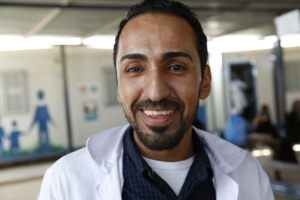Improvements in Healthcare in Syria

The Syrian Arab Republic (more commonly known as Syria) is a Middle Eastern country fraught with danger and grief. It has claimed the news headlines for the past decade. Its violent civil war has led to a shattered government with little to no control over its infrastructure and a diminished ability to provide services to its 17.5 million citizens. Proper healthcare in Syria, especially care focused on women and children, has been a service that suffered. UNICEF is a leading organization that is spearheading efforts in Syria to improve healthcare for women and children. These efforts have led to significant improvements in the health and well-being of both women and their children as years have passed.
Improvement in Numbers and Data
One of the easiest ways to identify the improvements in healthcare in Syria lies within the raw data. The life expectancy of Syrian citizens is one major indicator of healthcare improvements. In addition, life expectancy at birth is steadily increasing in Syria. It reached 71.8 years in 2018 after several years of declining numbers after 2006. This indicates a slow but steady return to its peak in 2005 when life expectancy was 74.43 years of age. This new incline could be due to a variety of factors. However, healthcare is definitely an important piece of the puzzle in improving life expectancy in a nation’s population.
Both infant deaths and neonatal deaths are steeply declining in Syria. Infant deaths have nearly halved since 2000, with numbers of deaths falling from 10,099 to 5,994 in 2018. Moreover, neonatal deaths have lowered from a peak of 8,804 in 1982 to an all-time low of 3,740 in 2018. These two statistics indicate that even at the earliest stages of life when people are the most vulnerable, healthcare in the Syrian Arab Republic is positively progressing in protecting the fitness of its citizens.
Improvements in Female and Child Care
The data and efforts to date have significantly impacted Syria’s healthcare system. However, it is important to note that all of this progress is occurring despite a lack of assistance from large funding sources. Therefore, it is imperative that Syria receives enough support via other means to ensure that this progress can continue without experiencing delay or derailment. This is a nation in trouble. However, with aid and care from people and organizations like UNICEF, healthcare in Syria could finally know relief.
